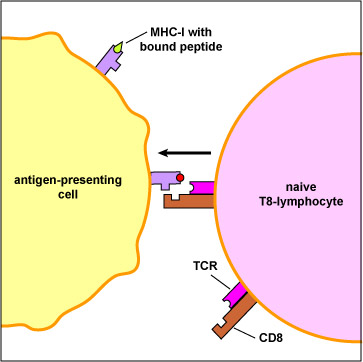Fig. 3: An Antigen-Presenting Dendritic Cell Presenting MHC-I with Bound Peptide to a Naive T8-Lymphocyte having a Complimentary T-cell Receptor


These APCs can degrade endogenous antigens (those found in the cytosol of the cell) into peptides by way of proteasomes. These peptides are then bound to MHC-I molecules, and placed on the surface of the dendritic cell. Now the peptide/MHC-I complexes can be recognized by a naive T8-lymphocyte having a complementary shaped T-cell receptor (TCR) and CD8 molecule. This activates the naive T8-lymphocyte enabling it to eventually proliferate and differentiate into cytotoxic T-lymphocytes (CTLs).
Last updated: Feb., 2021
Please send comments and inquiries to Dr.
Gary Kaiser